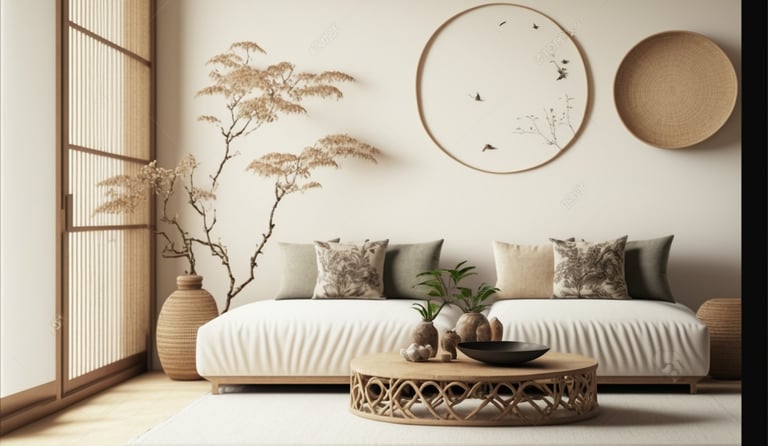Organic Minimalism
It is a style that combines the simplicity of minimalism with the warmth and natural textures of organic materials. The result is a space that is both sleek and cozy, with a focus on clean lines and functional design.


The new interior design style is called "Organic Minimalism". It is a style that combines the simplicity of minimalism with the warmth and natural textures of organic materials. The result is a space that is both sleek and cozy, with a focus on clean lines and functional design.
The color palette of Organic Minimalism is neutral and earthy, with shades of white, beige, and gray dominating the space. The use of natural materials is key in this style, with a focus on materials like wood, stone, and organic textiles.
The furniture in an Organic Minimalism space is simple and functional, with a focus on clean lines and geometric shapes. Pieces are chosen for their practicality, with a preference for multi-purpose furniture that can serve several functions. For example, a coffee table with built-in storage or a sofa bed that can double as a guest bed.
Lighting is an essential component of Organic Minimalism, with a focus on natural light and soft ambient lighting. Large windows and skylights are key in this style, allowing natural light to flood the space and enhance the natural textures of the materials. Soft, warm lighting, like table lamps or wall sconces, adds a cozy touch to the space.
In terms of accessories, Organic Minimalism favors natural elements like plants, stones, and driftwood. These elements add a touch of life and warmth to the space, while also tying in with the organic materials used in the design.
Overall, Organic Minimalism is a style that is both functional and inviting. Its focus on natural materials and clean lines creates a space that feels both modern and comfortable, with a sense of warmth and organic beauty. It is a style that is perfect for those who want a space that is both practical and inviting, without sacrificing style or elegance.
here are some principles that can guide the design of an Organic Minimalism interior:
Use of natural materials: The use of natural materials like wood, stone, and organic textiles is a key principle of Organic Minimalism. These materials add warmth and texture to the space, while also creating a connection to the natural world.
Clean lines and geometric shapes: Organic Minimalism favors clean lines and geometric shapes in furniture and accessories. This creates a sense of order and simplicity in the space, while also emphasizing functionality.
Neutral color palette: A neutral color palette dominated by shades of white, beige, and gray is another principle of Organic Minimalism. This creates a calm and soothing atmosphere in the space, while also allowing the natural textures of the materials to stand out.
Focus on natural light: The use of natural light is essential in Organic Minimalism, with large windows and skylights providing ample opportunities for natural light to enter the space. Soft, warm lighting also adds to the cozy ambiance of the space.
Multi-functional furniture: Multi-functional furniture that can serve several purposes is a key principle of Organic Minimalism. This not only maximizes space in the room but also adds to the functionality of the space.
Natural elements as accessories: Accessories that bring in natural elements like plants, stones, and driftwood are a key principle of Organic Minimalism. These elements add life and warmth to the space, while also tying in with the organic materials used in the design.
By following these principles, an Organic Minimalism interior can create a space that is both functional and inviting, with a sense of warmth and organic beauty.
